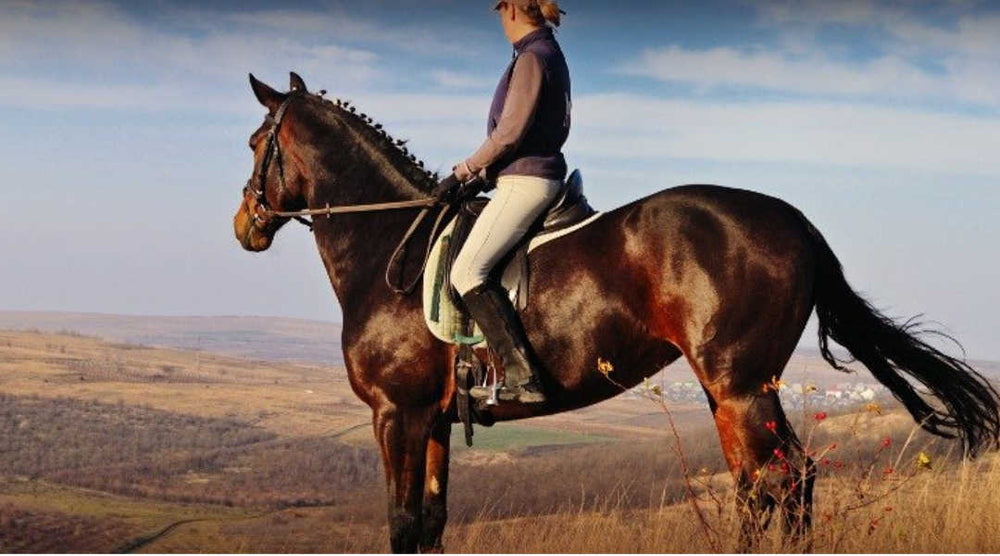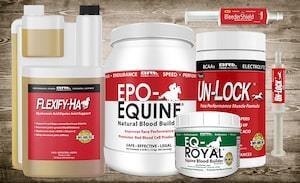
Your horse has a lot of muscles; 700 skeletal muscles, to be exact. Compare that to around 300 in the human body.
Muscles are complicated: They intertwine with connective tissue and different muscle groups have different jobs.Since your horse spends so much time using his muscles, let’s take a quick look at how they work.
You already know your horse needs rest and recovery time, but greater knowledge of his muscle anatomy might help you better understand the importance of the respite. After all, we all want our horses to have the healthiest muscles possible, because healthy muscles equal better performance.
Types of Muscles in Horses
Your horse has three muscles types: skeletal, smooth and cardiac. Each muscle type has the following specific functions:
1. Skeletal
- Supports and protects the skeleton and organs
- Helps with joint stabilization and posture
- Helps control movement
- Aids in body temperature regulation
2. Smooth
- Responds to the central nervous system
- Responsible for involuntary body functions
- Aids in digestion
- Helps control the bladder and bowel movements
- Surrounds/aids the reproductive and vascular systems
3. Cardiac (Heart) Muscle
- Strong: Circulates an average of 40 liters of blood throughout the body
- Weighs about 1% of your horse’s body weight
- Beats 32-36 times/minute in an average adult horse
- (Some horses beat as slow as 24 beats per minute and as fast as 40 beats per minute.)
- Maintains blood flow
Horse Muscle Fiber Types
Now that you know what kind of muscles your horse has, let’s look at what makes up those muscles.
Horse muscles are made up of two different fibers: Type I and Type II. Here are the differences between the two:
Type I Muscles
Type I muscle fibers are known as "slow twitch fibers." This means they work aerobically to use energy.
Type I Muscle Actions:
- Use adenosine triphosphate (ATP) for energy (carbohydrates, fats, and proteins all help produce ATP.)
- Used for endurance activities as muscles utilize fuel storage from nutrients
Type II Muscles
Type II muscle fibers are known as "fast twitch fibers" and are broken down into two categories: Type II A and Type II B.
Without getting too complicated, here’s what they do:
- Type II A: These muscles use both aerobic and anaerobic metabolisms to produce energy. They help maintain high speeds and support high-energy activities like jumping.
- Type II B: These muscles are anaerobic and help to achieve/maintain higher speeds.
It's important note that the ratio of these types of muscles varies, depending on the breed. Your quarter horse may have a fewer Type I muscle fibers than your friend’s Arabian does. This information should be factored into training for your next event. Your vet can help.
Natural Horse Supplements
Since you know that proper nutrients produce the fuel your horse’s muscles need, a proper diet is even more important, depending on your horse’s training and discipline levels.
If your vet recommends a natural muscle supplement, check out Un-Lock and learn how it’s helped other horse owners. And if you’re looking for a natural supplement to stimulate red blood cell production and maximize oxygen levels, EPO-Equine is a fantastic choice. It’s a natural blood builder that’s safe for daily use.
Your vet can help determine if one or both products can help improve your horse’s performance and aid in muscle maintenance. And be sure to check out these testimonials to see how other performance riders have benefitted from the BRL Equine edge.
Top trainers, owners and competitors rely on BRL Equine products to help their horses perform at their very best. You can get the same great results! Our all-natural equine nutritional supplements really work... guaranteed or your money back!





Also in Horse Tips and More
Top 10 Ways to Show Your Horse You’re Thankful For Him
November 01, 2021
View full article →
5 Ways to Prepare Your Barn For Summer
May 03, 2021
View full article →
Your New Spring Horse Health Checklist
March 12, 2021
View full article →